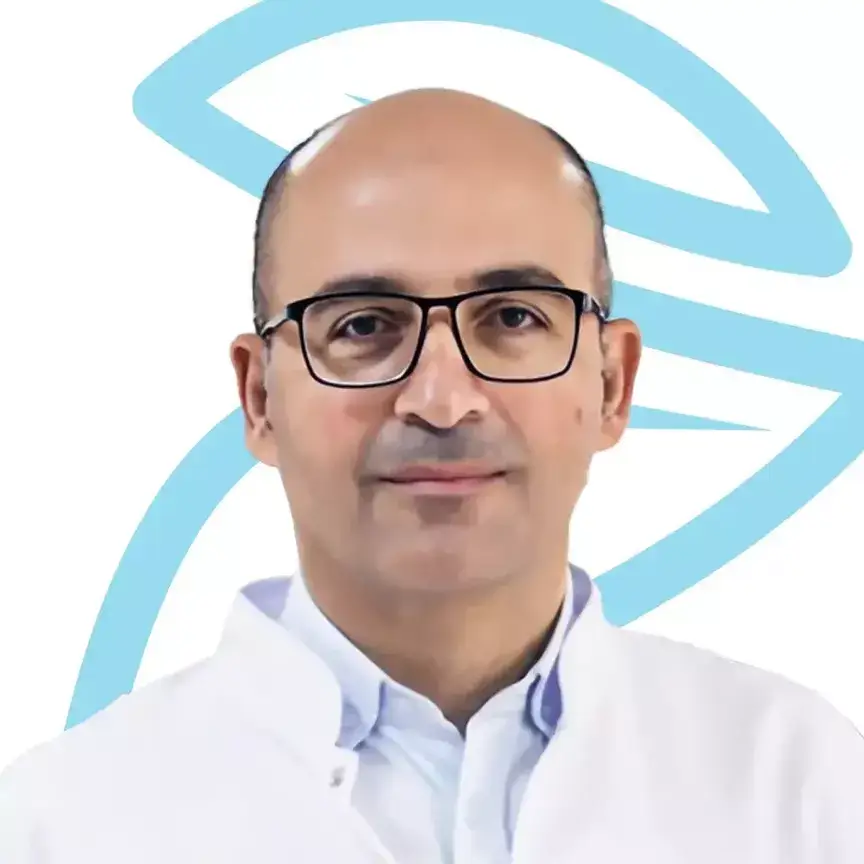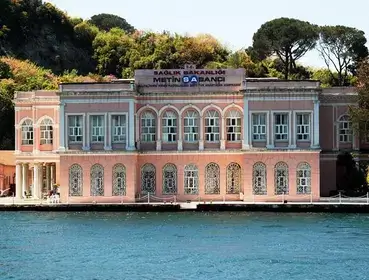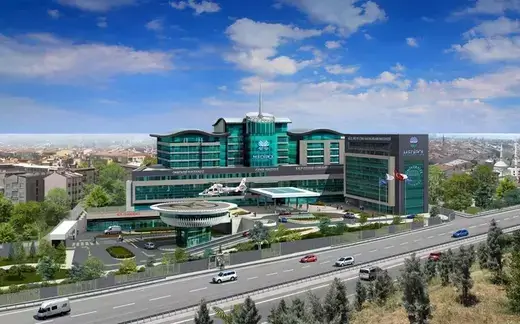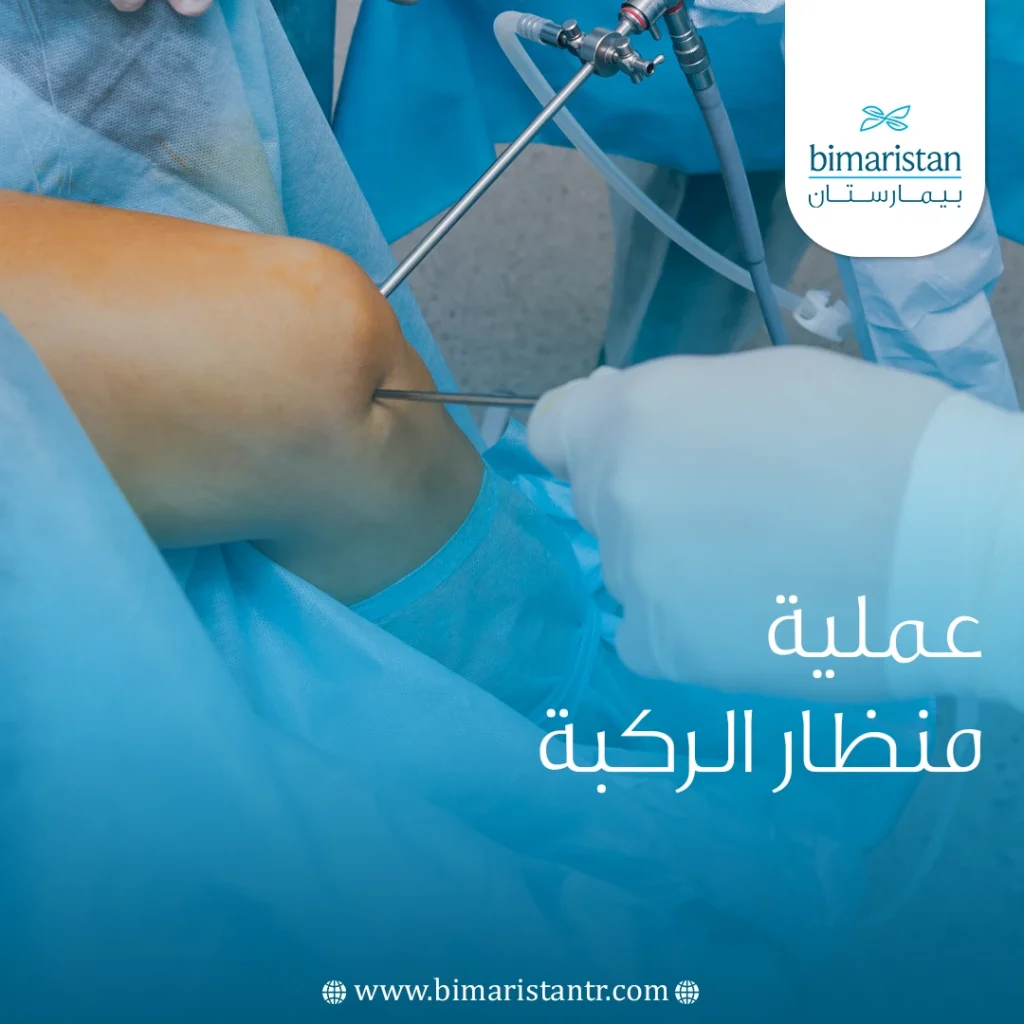عملية منظار الركبة في تركيا -يُطلق عليه أحيانًا اسم فحص الركبة- هو إجراء طبي طفيف التوغل يُستخدم على مفصل الركبة لتشخيص حالات أو إصابات الركبة وعلاجها. يتم إجراؤها باستخدام منظار المفصل، وهو عبارة عن أداة جراحية صغيرة بها ضوء وكاميرا في نهايتها يتم إدخالها في الركبة.
أثناء تنظير الركبة، يُدخل الجراح كاميرا صغيرة، تسمى منظار المفصل، في مفصل ركبتك. تعرض الكاميرا الصور على شاشة فيديو، ويستخدم الجراح هذه الصور لتوجيه الأدوات الجراحية المصغرة.
نظرًا لأن منظار المفصل والأدوات الجراحية رفيعة، يمكن للجراح استخدام شقوق صغيرة جدًا، بدلاً من الشق الأكبر اللازم للجراحة المفتوحة.
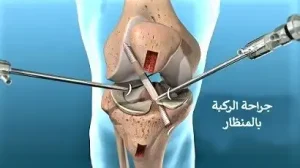
حيث ينتج عن هذا ألم أقل للمرضى، وتيبس أقل للمفاصل، وغالبًا ما يقصر الوقت المستغرق للتعافي والعودة إلى الأنشطة المفضلة.
قد يوصي الطبيب بفحص الركبة بواسطة التنظير إذا كان المريض يعاني من حالة مؤلمة لا تستجيب للعلاج غير الجراحي مثل الأدوية أو حقن الكورتيزون أو العلاج الطبيعي.
على وجه الخصوص، غالبًا ما يكون تنظير الركبة ناجحًا في المساعدة في تقليل أو إزالة الألم المرتبط بتلف الغضروف أو تلف الأنسجة الرخوة.
يفضل العديد من الأطباء والمرضى فحص الركبة على الإجراءات الأخرى.
وذلك لأن جراح الركبة العظمي يحتاج فقط إلى عمل شق صغير لاستخدام منظار المفصل.
عادة ما يكون هناك ألم أقل في الركبة، وتيبس مفاصل أقل شدة، وشفاء أسهل من الإجراءات الأخرى.
التاريخ الطبي والأدوية قبل عملية غضروف الركبة بالمنظار
سيطلب منك إكمال استبيان صحي في وقت استشارتك وقبل العملية.
سيطلب منك أيضاً معلومات حول أمراضك السابقة والحالية، والعمليات السابقة، والأدوية الحالية وأي نوع من أنواع الحساسية المعروفة.
من المهم الإبلاغ بأي تغيير في أدويتك أو حالتك الصحية.
يرجى أخذ قائمة بأدويتك الحالية والحساسية المعروفة معك إلى تركيا وتقديمها إلى طبيب التخدير الذي سيراك قبل الجراحة.
يجب إيقاف الأدوية المضادة للالتهابات مثل الأسبرين وأوروديس وفيلدين وفولتارين ونابروسين قبل الجراحة بعشرة أيام لأنها قد تسبب نزيفًا.
قد يستمر سيليبريكس وفيوكس حتى اليوم السابق للإجراء.
يُنصح بالتوقف عن التدخين لأطول فترة ممكنة قبل الجراحة.
توقف عن تناول أي أدوية طبيعية أو عشبية قبل الجراحة بعشرة أيام لأنها قد تسبب النزيف أيضًا.
استمر مع جميع الأدوية الأخرى ما لم ينص على خلاف ذلك.
أخبر الجراح إذا كان لديك أي سحجات أو بثور حول الركبة.
يرجى إحضار أي فحوصات بالأشعة السينية أو التصوير بالرنين المغناطيسي أو غيرها من الفحوصات التي أجريتها والتي قد تكون ذات صلة بجراحتك.
أحضر قائمة الأدوية معك لإعطائها لطبيب التخدير.
تجرى العملية عادة تحت التخدير العام ولكن القرار النهائي يعود لطبيب التخدير.
سيتم قبولك في المستشفى في يوم العملية في معظم الأوقات.
ستحتاج إلى الاتصال بالمستشفى في يوم العمل السابق للعملية لإعلامك بوقت دخول المستشفى.
سيتم إعطاؤك أيضًا تعليمات عن الصيام (أي سيتم إخبارك متى يجب عليك التوقف عن الأكل والشرب قبل الجراحة).
سوف يراك طبيب التخدير قبل العملية.
سوف تحتاج إلى مناقشة تاريخك الطبي وأدويتك الحالية وأي مشاكل تخدير سابقة مع طبيب التخدير.
لا تتردد في مناقشة نوع التخدير الذي سيتم استخدامه (عادة مخدر عام) مع طبيب التخدير وآثاره الجانبية ومضاعفاته المحتملة.
تجرى العملية عادة تحت تأثير التخدير العام (أي أنك نائم). في نهاية الإجراء، يتم حقن الركبة بمخدر موضعي طويل المفعول لتقليل الألم.
إجراء عملية تنظير الركبة في تركيا
عملية الركبة بالمنظار تشبه إلى حد كبير منظار الكتف.
يمكن استخدام تنظير الركبة عند إجراء التشخيص أو تأكيده وإجراء الجراحة:
إجراء التشخيص:
إذا كان المريض يعاني من آلام في الركبة، فيمكن للطبيب أن يأمر بإجراء أشعة سينية أو اختبارات تصوير أخرى.
ومع ذلك، قد يحتاج الطبيب إلى مزيد من المعلومات قبل المضي قدمًا في علاجات مثل الجراحة.
في هذه الحالة، يمكن للطبيب استخدام فحص الركبة للتشخيص أو لتأكيد العلاج.
للقيام بذلك، يقوم الطبيب بعمل شق صغير واحد، ثم يقوم بإدخال منظار المفصل الصغير في الركبة، ويمكن مشاهدة الصور على شاشة فيديو.
مثال على كيفية استخدام هذا هو عندما يريد الجراح رؤية تمزق الغضروف المفصلي لتقييم مدى الضرر.إجراء الجراحة أو ماتعرف بـ عملية تنظيف غضروف الركبة بالمنظار:
في حالة استخدام تنظير المفصل في الجراحة، يتم عمل شقوق صغيرة في نقاط مختلفة حول مفصل الركبة، بالإضافة إلى الفتحة المخصصة لمنظار المفصل.
تسمح هذه الفتحات الإضافية للطبيب بإدخال أدوات جراحية صغيرة في المنطقة حسب الحاجة.
باستخدام الصور من منظار المفصل ، يمكن للجراح إصلاح الأربطة الممزقة أو إزالة الغضروف المفصلي الممزق، أو التالف، أو إزالة شظايا العظام، أو إجراء علاجات أخرى.
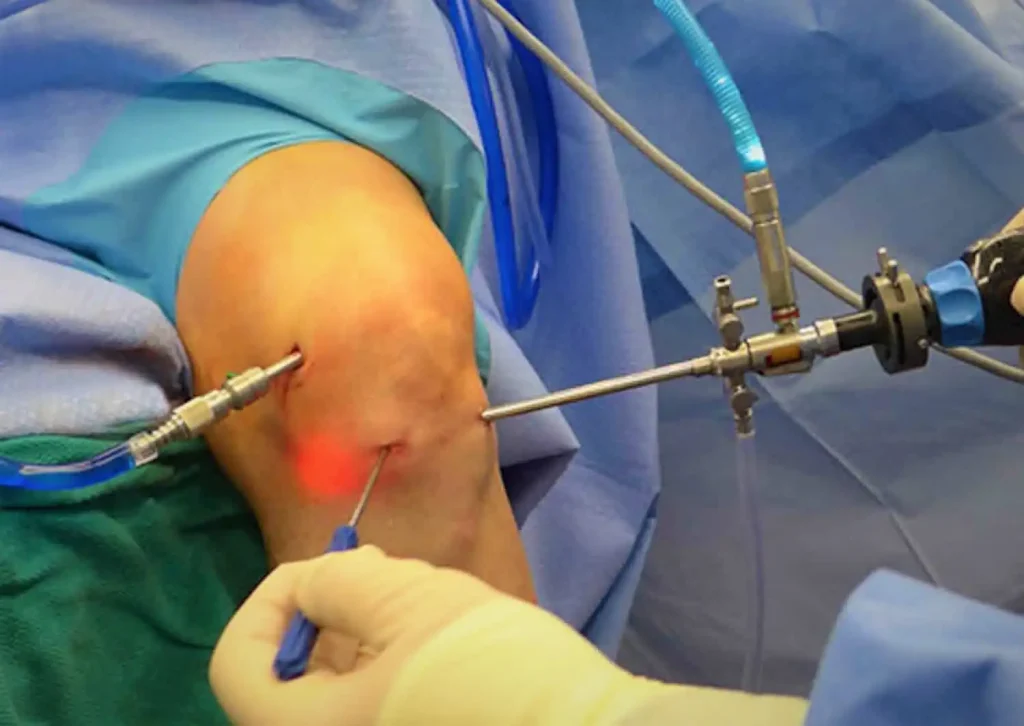
المزيد عن جراحة الركبة بالمنظار
ما لم يكن المريض يعاني من مشكلة طبية أخرى، قد يتم إجراء تنظير الركبة في العيادة الخارجية، لذلك لن يحتاج المريض إلى المبيت في المستشفى.
مدة عملية منظار الركبة في تركيا بشكل عام تستغرق من 30 دقيقة إلى عدة ساعات، اعتمادًا على مدى الضرر.
عند استخدام تنظير الركبة للتشخيص فقط، قد يكون الوقت أقصر. في حين أن منظار الركبة لعلاج الخشونة قد يستغرق وقت أطول.
قبل تنظير الركبة، سيحصل المريض على نوع من التخدير. سيحدد الطبيب والمريض ما إذا كان التخدير الموضعي (الركبة المخدرة فقط) أم التخدير الموضعي (التخدير من الخصر إلى أسفل) أم التخدير العام (وضع المريض في حالة نوم) هو الأفضل.
ما بعد عملية منظار الركبة
بعد عملية منظار الركبة، سيغلق الجراح الشق
. في بعض الأحيان، هناك حاجة إلى شرائط صغيرة فقط من الشريط اللاصق.
في أوقات أخرى، ستكون هناك حاجة لغرزة صغيرة واحدة أو اثنتين.
بعد ذلك، يستريح المريض في غرفة الإنعاش لعدة ساعات.
سيزورك أخصائي العلاج الطبيعي أيضًا في الجناح بعد الجراحة.
سيظهر لك بعض التمارين للقيام بها. إذا كانت العكازات مطلوبة، فسيتم توفيرها من قبل أخصائي العلاج الطبيعي بالمستشفى.
لا يجوز قيادة مركبة آلية لمدة 24 ساعة بعد التخدير العام
. لذلك سوف تحتاج إلى ترتيب وسيلة نقل أخرى إلى المنزل من المستشفى
. من الأفضل العودة إلى المنزل مع قريب أو صديق. يمكنك استئناف القيادة فقط عندما تكون ركبتك مريحة ولا توجد قيود على تشغيل مركبتك.
في المنزل، سيتبع المريض تعليمات الطبيب، والتي قد تشمل تناول بعض الأدوية، ورفع الركبة، والحصول على قسط كبير من الراحة، وفي النهاية ممارسة الرياضة.
عادة، يمكن للمريض العودة إلى النشاط الخفيف في غضون أسابيع قليلة، على الرغم من اختلاف كل مريض.
يمكنك ممارسة الرياضة في المنزل حتى درجة الانزعاج الخفيف. من غير المحتمل أن يسبب هذا أي ضرر لركبتك. تجنب القرفصاء العميقة والركوع وقضاء الكثير من الوقت على قدميك في الأيام القليلة الأولى بعد الجراحة.
من المهم إبقاء الساق مرتفعة قدر الإمكان في الأيام التالية للجراحة.
يوصى بعدم السفر لمسافات طويلة بالسيارة أو الطائرة لمدة أسبوعين على الأقل ويفضل أن يكون ذلك ستة أسابيع بعد الجراحة لأن السفر المطول يمكن أن يزيد من خطر تكوين جلطات دموية في الساق.
يمكن أن تؤذي الإصابات أو الإفراط في الاستخدام أو الضعف أو الشيخوخة ركبتيك إلى زيادة الألم وعدم الراحة.
في حين أن التعافي من تنظير الركبة أسرع من التعافي من جراحة الركبة المفتوحة التقليدية، فمن المهم اتباع تعليمات طبيبك بعناية بعد العودة إلى المنزل.
ما هي فوائد عملية منظار الركبة؟
يعتبر تنظير الركبة أداة فعالة في تشخيص حالة مفاصلك ولتأكيد علاج مشاكل الركبة مثل تمزق الغضروف المفصلي وتآكل الغضاريف. كما بالإمكان استخدام منظار الركبة لعلاج الخشونة.
يمكن أن يوفر تنظير المفاصل في نهاية المطاف الراحة من آلام الركبة وتحسين الحركة.
يعد الحفاظ على نمط حياة طبيعي ونشط مع قدر أكبر من الراحة من الفوائد الرئيسية لهذا الإجراء.
مضاعفات عملية منظار الركبة
معدل المضاعفات بعد الجراحة بالمنظار منخفض للغاية.
إذا حدثت مضاعفات، فعادة ما تكون بسيطة ويمكن علاجها بسهولة. تشمل المشاكل المحتملة بعد الجراحة مع تنظير مفصل الركبة ما يلي:
- عدوى
- جلطات الدم
- تصلب الركبة
- تراكم الدم في الركبة
الآثار الجانبية لعملية منظار الركبة
في حين أن تنظير مفصل الركبة إجراء آمن لعلاج إصابات الركبة، إلا أن هناك بعض المخاطر التي يجب أن يكون المرضى على دراية بها. اعتمادًا على حالة المريض والمفاصل، قد تشمل هذه المخاطر انتفاخ الركبة بعد عملية المنظار وتيبس الركبة، أو النزيف، أو جلطات الدم، أو العدوى، أو مشاكل الركبة المستمرة.
ما هي مدة الشفاء بعد تنظير الركبة؟
تعتمد فترة التعافي بعد جراحة تنظير الركبة على المريض وحالته. بالنسبة لمعظم الحالات، يمكن للمرضى العودة إلى العمل المكتبي في غضون أسبوع. ويعود الكثيرون إلى نمط حياة أكثر نشاطًا وطبيعية في غضون شهر إلى شهرين.
صعود الدرج بعد عملية منظار الركبة
بإمكانك صعود الدرج بعد عملية منظار الركبة بعد اسبوعين من العملية.
في حين أنك تستطيع المشي بعد اسبوع واحد من عملية منظار الركبة.
إدارة الألم بعد عملية منظار الركبة
بعد الجراحة، ستشعر ببعض الألم. هذا جزء طبيعي من عملية الشفاء. سيعمل طبيبك وممرضاتك على تقليل الألم، مما قد يساعدك على التعافي من الجراحة بشكل أسرع.
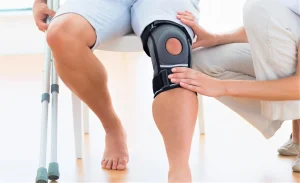
غالبًا ما توصف الأدوية لتخفيف الآلام على المدى القصير بعد الجراحة.
تتوفر العديد من أنواع الأدوية للمساعدة في إدارة الألم، بما في ذلك المواد الأفيونية والأدوية غير الستيرويدية المضادة للالتهابات (NSAIDs) والمخدرات الموضعية.
قد يستخدم طبيبك مجموعة من هذه الأدوية لتحسين تخفيف الألم، وكذلك تقليل الحاجة إلى المواد الأفيونية.
اعلم أنه على الرغم من أن المواد الأفيونية تساعد في تخفيف الألم بعد الجراحة، إلا أنها مخدرة ويمكن أن تسبب الإدمان.
أصبح الاعتماد على المواد الأفيونية والجرعة الزائدة مشكلة صحية عامة حرجة. من المهم استخدام المواد الأفيونية فقط وفقًا لتوجيهات الطبيب.
بمجرد أن يبدأ الألم في التحسن، توقف عن تناول المواد الأفيونية. تحدث إلى طبيبك إذا لم يبدأ الألم في التحسن في غضون أيام قليلة من الجراحة.
عادة ما يكون الألم المفرط في الركبة بعد الجراحة بالمنظار ناتجًا عن فرط النشاط أو قضاء الكثير من الوقت على قدميك قبل أن يتم تقوية عضلات الفخذ بشكل كافٍ.
يمكن أن يسبب التورم المفرط أيضًا ألمًا في الركبة.
مدة الألم بعد عملية غضروف الركبة بالمنظار قد تستغرق لحوالي شهرين بعد الجراحة مع تناقصه تدريجياً لذلك يجب أخذ ذلك في عين الاعتبار.
من الطبيعي أن تكون الركبة مؤلمة ومتورمة بعد تنظير المفصل. يجب زيادة النشاط تدريجيًا.
في حال بقاء الألم لفترة طويلة بعد العملية فقد يلزم استبدال مفصل المفصل جراحياً.
نصائح لتقليل الألم بعد عملية تنظير الركبة
يجب تجنب المشي أو الوقوف لفترات طويلة في الأيام القليلة الأولى.
يجب أن تتجنب القرفصاء أو الركوع أو محاولة ثني ركبتك أكثر من 90 درجة إذا كانت الركبة مؤلمة أو متورمة.
تقليل الانتفاخ
حافظ على رفع الساق قدر الإمكان بعد العملية.
ضع كيس ثلج على الركبة لمدة 30 دقيقة في كل مرة لتقليل التورم والألم.
يمكن أن تساعد الأدوية المضادة للالتهابات أيضًا في تقليل التورم.
في البداية، يجب وضع كمادات الثلج على الضمادات، وبعد ذلك عندما يتم تقليل الضمادة، تأكد من وضع قطعة قماش بين جلدك وكمادة الثلج لمنع حرق الثلج.
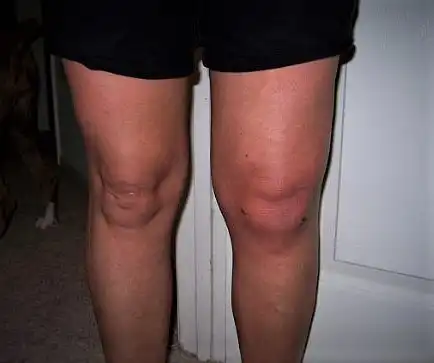
العناية بالضمادات بعد عملية منظار الركبة
ستغادر المستشفى بضمادة تغطي ركبتك.
حافظ على جروحك نظيفة وجافة.
سيخبرك الجراح متى يمكنك الاستحمام ومتى يجب تغيير الضمادة.
سيراك جراحك في المكتب بعد أيام قليلة من الجراحة للتحقق من تقدمك، ومراجعة النتائج الجراحية، وبدء برنامج العلاج بعد الجراحة.
تمارين الركبة بعد عملية المنظار
يجب أن تمرن ركبتك بانتظام لعدة أسابيع بعد الجراحة.
سيعيد ذلك الحركة ويقوي عضلات ساقك وركبتك. حيث أن العلاج الطبيعي بعد عملية منظار الركبة مفيد جداً لإطالة مدة الفائدة المرجوة من العملية.
تعتمد نتائج الجراحة بالمنظار على نتائج تنظير المفصل والحالة الأساسية للمفصل قبل العملية.
في حالات تمزق الغضروف المفصلي مع عدم وجود أضرار أخرى للمفصل، تكون النتائج ممتازة عادةً (قد يكون هناك ميل طويل الأمد نحو التهاب المفاصل حيث إن أحد ممتصات الصدمات في المفصل قد تضرر).
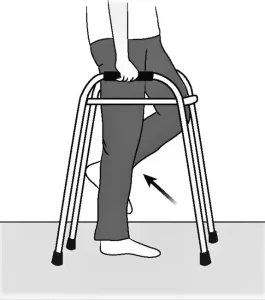
من المرجح أن تستمر الأعراض في المرضى الذين تبين أنهم أصيبوا بأضرار في الغضروف المفصلي (الذي يبطن المفصل).
هذا بسبب الطبيعة الأساسية للحالة وقد يكون متقطعًا.
من غير المرجح أن يحصل المرضى الذين يعانون من هشاشة العظام على راحة كاملة من الأعراض بعد الجراحة بالمنظار.
يمكن أن تساعد الجراحة بالمنظار في وجود هشاشة العظام في حالة تمزق الغضروف المفصلي أو وجود غضروف رخو في المفصل، ولكنه لا يؤثر على الحالة الأساسية، والتي من المحتمل أن تتطور تدريجيًا وتحتاج إلى استبدال للمفصل.
في بعض الأحيان، يمكن أن تؤدي الجراحة بالمنظار في وجود هشاشة العظام إلى تفاقم الأعراض لمدة أشهر.
تكون النتائج في هذه الحالات مخيبة للآمال أحيانًا مع تفاقم الأعراض، ولكن يمكن أن توفر راحة ممتازة لبعض المرضى.
ممارسة الرياضة
من المفيد القيام ببعض تمارين عضلات الفخذ قبل العملية. تم تصميم هذه التمارين للحفاظ على قوة عضلات الفخذ (وهي عضلات الفخذ الأمامية). من المهم جدًا أيضًا مواصلة هذه التمارين بعد الجراحة.
تعتبر ممارسة الرياضة حتى درجة الألم الخفيف أمرًا معقولاً ومن غير المرجح أن تسبب أي ضرر داخل الركبة.
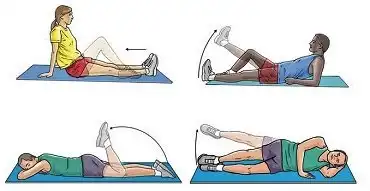
قيادة السيارة بعد عملية منظار الركبة
سيناقش طبيبك معك متى يمكنك القيادة. عادة، يمكن للمرضى القيادة من 1 إلى 3 أسابيع بعد العملية.
العودة إلى العمل
يمكنك العودة إلى العمل حيث تتحسن وظيفة ركبتك جيدًا بما يكفي للقيام بعملك المحدد. هذا لا يعني أنه يجب حل كل الانزعاج، حيث سيكون هناك بعض الطراوة حول مواقع الشق. من الطبيعي أن يكون هناك بعض الانزعاج في الركبة لعدة أسابيع بعد الجراحة بالمنظار.
يتضمن التعافي من هذه العملية تقليل التورم وتقوية العضلات وتقليل الألم.
ملخص
تنظير مفصل الركبة هو إجراء آمن وفعال.
تذكر أن كل ركبة فريدة من نوعها، وأن وقت الشفاء ونتائج الإجراء يعكس ذلك.
المضاعفات نادرة ولكنها يمكن أن تحدث.
إذا كانت لديك أسئلة أخرى بخصوص الجراحة، يرجى طرحها على طبيبك قبل العملية.
يمكن أن يساعدك العمل مع معالج فيزيائي على تحقيق أفضل تعافي.
ستلعب التمارين العلاجية دورًا مهمًا في كيفية تعافيك. قد يحسن برنامج العلاج الطبيعي الرسمي النتيجة النهائية.
الختام
يعود الكثير من الناس إلى ممارسة الأنشطة الكاملة غير المقيدة بعد تنظير المفصل. يعتمد تعافيك على نوع الضرر الذي كان موجودًا في ركبتك.
ما لم تكن قد خضعت لعملية إعادة بناء الأربطة، يجب أن تكون قادرًا على العودة إلى معظم الأنشطة البدنية بعد 6 إلى 8 أسابيع، أو في بعض الأحيان قبل ذلك بكثير. قد يلزم تجنب الأنشطة ذات التأثير العالي لفترة أطول.
إذا كانت وظيفتك تنطوي على عمل شاق، فقد يستغرق الأمر وقتًا أطول قبل أن تتمكن من العودة إلى وظيفتك.
ناقش متى يمكنك العودة إلى العمل بأمان مع طبيبك.
بالنسبة لبعض الأشخاص، من الضروري إجراء تغييرات في نمط الحياة لحماية المفصل.
من الأمثلة على ذلك التغيير من التمارين عالية التأثير (مثل الجري) إلى الأنشطة ذات التأثير الأقل (مثل السباحة أو ركوب الدراجات). هذه قرارات ستتخذها بتوجيه من جراحك.
في بعض الأحيان، يمكن أن يكون الضرر الذي يصيب ركبتك شديدًا بما يكفي بحيث لا يمكن عكسه تمامًا بالجراحة.
سعر عملية منظار الركبة
سعمر عملية منظار الركبة تختلف حسب نوع الأذية الموجودة في المفصل حيث أنها تكون حولي 3500 دولار أمريكي للحالات التشخيصية. وتزيد بحوالي 1000 دولار في حال وجود تمزق للأربطة ويجب خياطتها. وتزيد بمقدار 1000 دولار في حال حقن للخلايا الجذعية.

